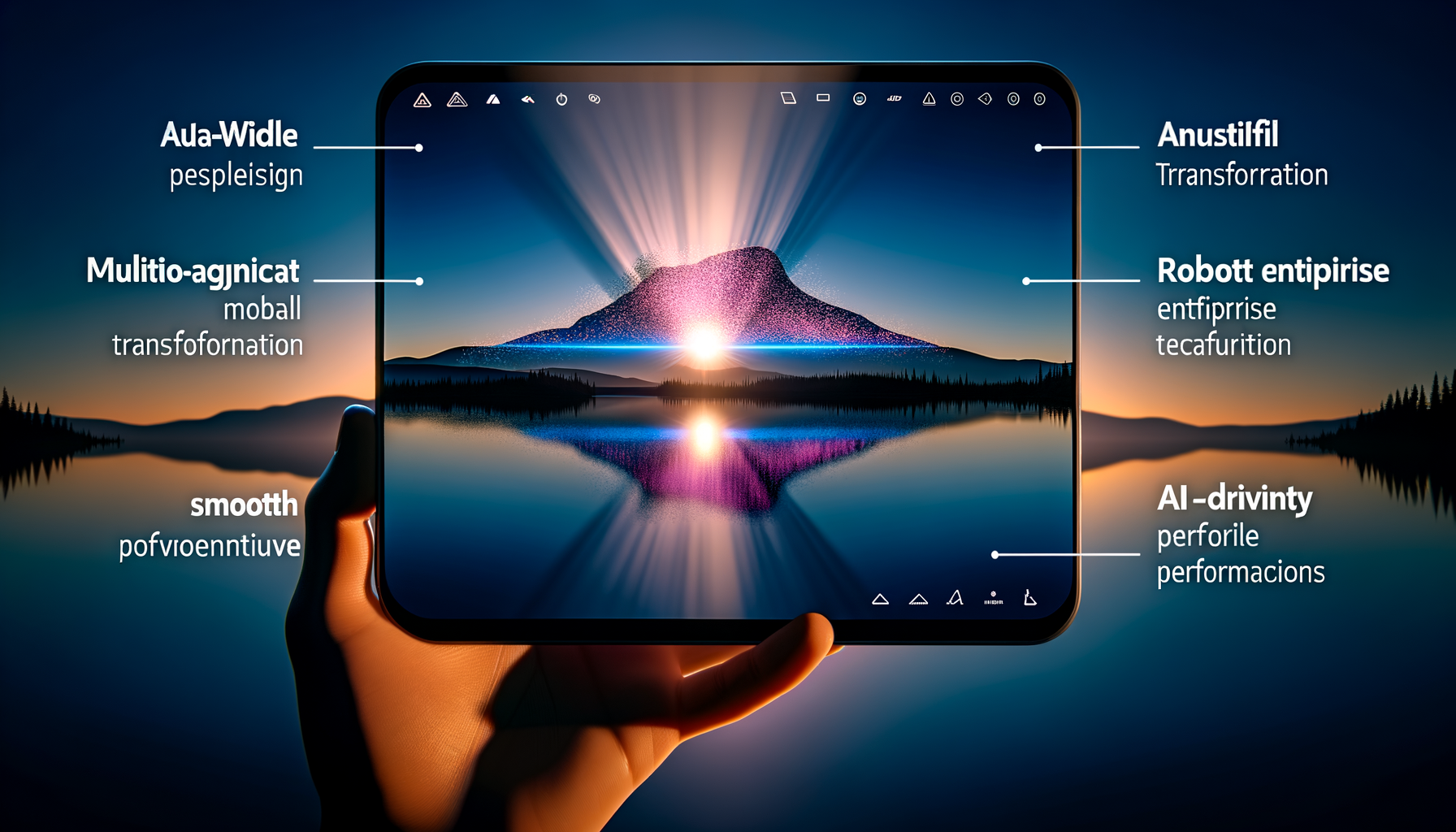Have you ever wondered why some mobile apps feel seamless and intuitive, while others leave you tapping in frustration? As of 2023, over 60% of businesses are investing in cross-platform mobile app development to ensure a consistent user experience across iOS and Android (Statista, 2023). In this article, we’ll explore how leveraging frameworks like React Native and Flutter can streamline your development process, integrate AI for smarter apps, and stay ahead in the ever-evolving mobile landscape.
Understanding Cross-Platform Frameworks
Why Go Cross-Platform?

Developers collaborating over a digital whiteboard illustrating cross-platform architecture.
In today’s fast-paced digital environment, reaching users on both iOS and Android without duplicating efforts is essential. Cross-platform frameworks like React Native and Flutter allow developers to write code once and deploy it across multiple platforms. This not only speeds up the development process but also reduces costs and ensures consistency.
React Native, backed by Facebook, offers a robust ecosystem for building native-like apps using JavaScript. Flutter, on the other hand, is Google's UI toolkit for crafting natively compiled applications with a single codebase. Both frameworks have their strengths, but choosing the right one depends on your specific use case.
According to a 2023 survey by Stack Overflow, 42% of developers preferred Flutter for its rapid performance and expressive UI components, while 38% favored React Native for its extensive libraries and community support (Stack Overflow Developer Survey, 2023).
LIST
- •React Native: JavaScript, strong community support
- •Flutter: Dart, fast performance, expressive UI
Integrating AI in Mobile Apps
AI: The Future of Mobile

Diagram showing AI integration workflow in mobile app development.
AI integration in mobile apps is not just a trend; it’s becoming a necessity. From chatbots that enhance customer service to personalized content recommendations, AI-driven features can significantly enhance user engagement and retention.
For instance, integrating machine learning models can help predict user behavior, allowing for personalized experiences that increase app stickiness. Furthermore, AI-powered analytics provide insights into user interactions, helping refine app features and improve UX.
As 5G continues to roll out, it enhances the capabilities of AI applications by providing faster data processing and lower latency. This synergy between AI and 5G is set to revolutionize mobile experiences, making apps smarter and more responsive.
CALLOUT
Embrace AI to create smarter, more engaging mobile apps. Book a free AI integration consultation with Quicklook today.
UI/UX Best Practices for Cross-Platform Apps
Designing for Consistency and Engagement

Illustration of mobile app UI/UX design process with diverse team input.
User experience can make or break your app. In cross-platform development, ensuring a consistent UI/UX across devices is crucial. Key principles include maintaining design uniformity, intuitive navigation, and interactive elements that enhance user engagement.
Leverage design systems like Material Design for Android and Human Interface Guidelines for iOS to create visually appealing and functional interfaces. Remember, simplicity is key—avoid clutter and focus on delivering value through a seamless user journey.
Consider leveraging tools like Figma or Sketch to prototype and validate your designs quickly. These tools enable collaborative design processes, allowing teams to iterate and refine UI/UX elements efficiently.
QUOTE
"Great design is eliminating all unnecessary details." – Ming-Chi Kuo
Security and Performance Optimization
Keeping Your App Safe and Fast

Diagram of cloud security layers in mobile app architecture.
Security and performance are critical in mobile app development. With the increase in data breaches, securing user data must be a top priority. Utilize encryption, secure authentication, and regular updates to protect your app from vulnerabilities.
Performance optimization is equally important. Users expect fast, responsive apps. Optimize your code, compress images, and use caching strategies to enhance app speed. Additionally, with the advent of 5G, optimizing for high-speed networks can further improve user experience.
At Quicklook, our enterprise security expertise ensures your app not only meets but exceeds industry standards. We help you build robust, secure applications that users trust.
LIST
- •Implement encryption and secure authentication
- •Optimize code and use caching strategies
Choosing the Right Framework: React Native vs Flutter
A Comparative Analysis

Comparison chart of React Native and Flutter features and benefits.
Choosing between React Native and Flutter often comes down to specific project needs. React Native excels in scenarios requiring quick iteration and a vast library of components. It’s ideal for apps that need to leverage existing JavaScript talent within your team.
Flutter offers superior performance with its compiled code and boasts a highly customizable UI. It’s perfect for projects where design and performance are paramount. Additionally, the hot-reload feature significantly speeds up the development process.
Consider your team’s expertise, project timeline, and app requirements when choosing a framework. Both React Native and Flutter can deliver exceptional results when aligned with your strategic goals.
CALLOUT
Evaluate your project needs to choose the right framework. Consult with Quicklook for personalized guidance.
Frequently Asked Questions
QWhat are the latest trends in cross-platform mobile app development for 2025?
QHow can AI and machine learning be integrated into cross-platform mobile apps?
QWhat are the benefits of using frameworks like React Native and Flutter for cross-platform development?
QHow does 5G impact mobile app performance?
Conclusion
Cross-platform mobile app development is revolutionizing how businesses engage users across devices. By selecting the right frameworks and integrating technologies like AI, companies can deliver seamless, secure, and high-performing apps.
Future Vision
As we move toward 2025, embracing these strategies will keep your business at the forefront of mobile innovation.
Schedule your AI audit with Quicklook.
